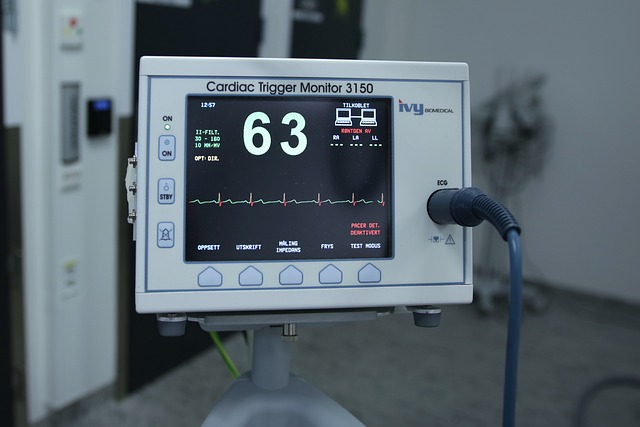Healthcare is an ever-evolving field driven by technological advancements and the pursuit of better patient outcomes. One of the most significant changes recently is integrating various systems and practices.
While this integration brings promise, it also brings its fair share of challenges. This article will delve into the specifics of integration challenges in the healthcare sector and provide actionable insights for navigating them. You can contact a healthcare data platform to help you overcome the following challenges!
The Need for Integration
In the past, healthcare operated in silos. Hospitals, clinics, and other medical facilities had separate systems, making sharing information and coordinating care challenging.
Integration aims to break down these barriers and create a seamless data flow and collaboration among healthcare entities.
1. Electronic Health Records (EHRs)
Electronic Health Records have revolutionized the healthcare sector by digitizing patient information, making it easily accessible to authorized healthcare professionals.
However, implementing EHRs across a healthcare network is no simple task. Compatibility issues between various EHR systems, data migration, and privacy concerns are some of the integration challenges that organizations face.
Consider that a primary care physician faces hurdles when accessing a patient’s historical records from a different hospital, as their EHR systems are incompatible.
2. Interoperability Woes
Interoperability refers to the ability of different systems to exchange and interpret data accurately. In healthcare, achieving true interoperability is like solving a puzzle with pieces from different manufacturers.
Ensuring that medical devices, EHRs, and other healthcare technologies can communicate seamlessly remains daunting.
Many nurses struggle to upload vital signs data from a patient’s monitoring device into the hospital’s EHR system, leading to delays in treatment decisions.
3. Data Security and Privacy
Integration brings together a vast amount of sensitive patient data from different sources. This consolidation raises concerns about data security and privacy breaches.
Healthcare organizations must navigate strict regulations like the Health Insurance Portability and Accountability Act (HIPAA) to protect patient information.
Many hospitals face a data breach, exposing patient records due to inadequate data security measures while integrating electronic systems.
4. Technology Costs and Training
Investing in cutting-edge healthcare technologies is essential for integration success. However, these investments come with hefty price tags. Moreover, healthcare professionals require extensive training to adapt to new technologies and workflows effectively.
Manu Hospital struggles to manage the high costs of implementing a state-of-the-art medical imaging system. Some staff members resist adopting the new technology due to insufficient training.
5. Cultural Shifts and Resistance to Change
Integrating healthcare practices often requires significant cultural changes within organizations. Resistance to change among staff can hinder the successful adoption of new systems and processes.
For example, when Clinic A merges with Clinic B, staff members struggle to adjust to the different work cultures, resulting in decreased productivity and collaboration.
6. Regulatory Compliance and Legal Challenges
Healthcare is a heavily regulated industry. Integration can expose organizations to legal challenges without compliance in mind. Navigating these regulations while simultaneously integrating systems can be a complex task.
A medical device manufacturer faces lawsuits when it fails to meet regulatory requirements during integration with a hospital’s electronic system.
7. Data Analytics and Decision-making
Integration can provide a wealth of data that, if properly analyzed, can lead to significant insights and improvements in patient care. However, data overload and lack of analytical expertise may hinder organizations from leveraging this potential.
Many hospital struggles to analyze the vast amount of patient data generated through integrated systems, missing out on opportunities to optimize treatment plans and reduce costs.
8. Maintaining Patient-Centric Care
Amidst all the integration challenges, it is crucial not to lose sight of the goal: providing patient-centric care. The focus should always be on improving patient outcomes and experiences.
Despite the integration efforts, a hospital notices a decline in patient satisfaction scores, highlighting the need to refocus on patient-centric practices.
Strategies for Successful Integration
- Thorough Planning – Invest time in understanding the specific needs of your healthcare organization and create a detailed integration plan.
- Vendor Collaboration – Choose technology vendors that prioritize interoperability and offer solutions that seamlessly integrate with your existing systems.
- Data Security Measures – Implement robust data security measures, including encryption, access controls, and regular audits, to safeguard patient information.
- Staff Training and Support – Provide comprehensive training and ongoing support to help staff adapt effectively to new technologies and workflows.
- Cultural Alignment – Foster a culture of collaboration and open communication to facilitate a smooth integration of healthcare entities.
- Legal Expertise – Involve legal experts who understand healthcare regulations to ensure compliance during integration.
- Data Analytics Expertise – Employ data analysts and implement analytics tools to make the most of the integrated data for better decision-making.
Final Words
Integrating different healthcare systems presents both opportunities and challenges. By addressing the specific hurdles related to EHRs, interoperability, data security, cultural shifts, and compliance, healthcare organizations can steer through the integration tides successfully.
Embracing a patient-centric approach and adopting best practices will help the healthcare sector thrive in the face of these challenges and continue to provide top-notch care to patients around the globe.







Recent Comments